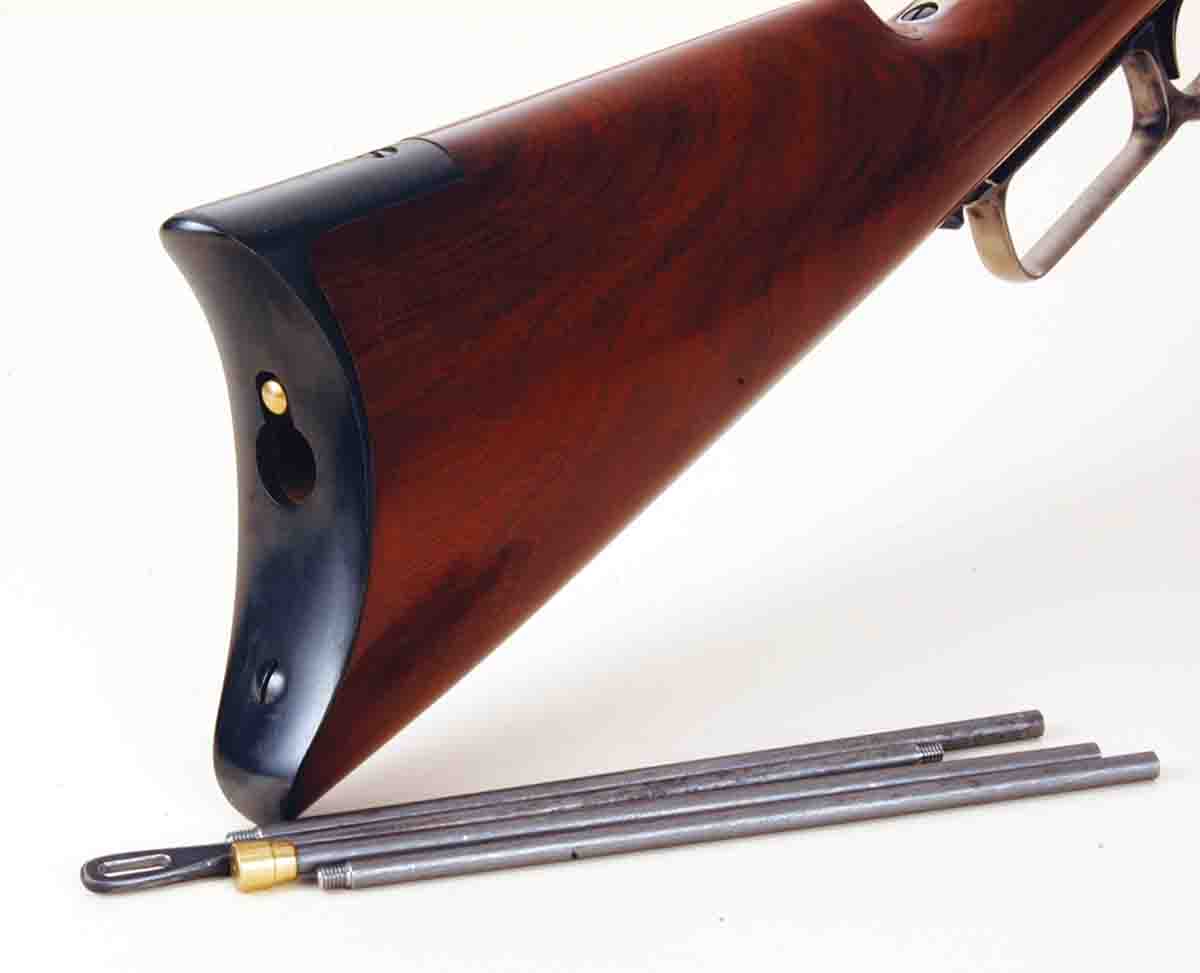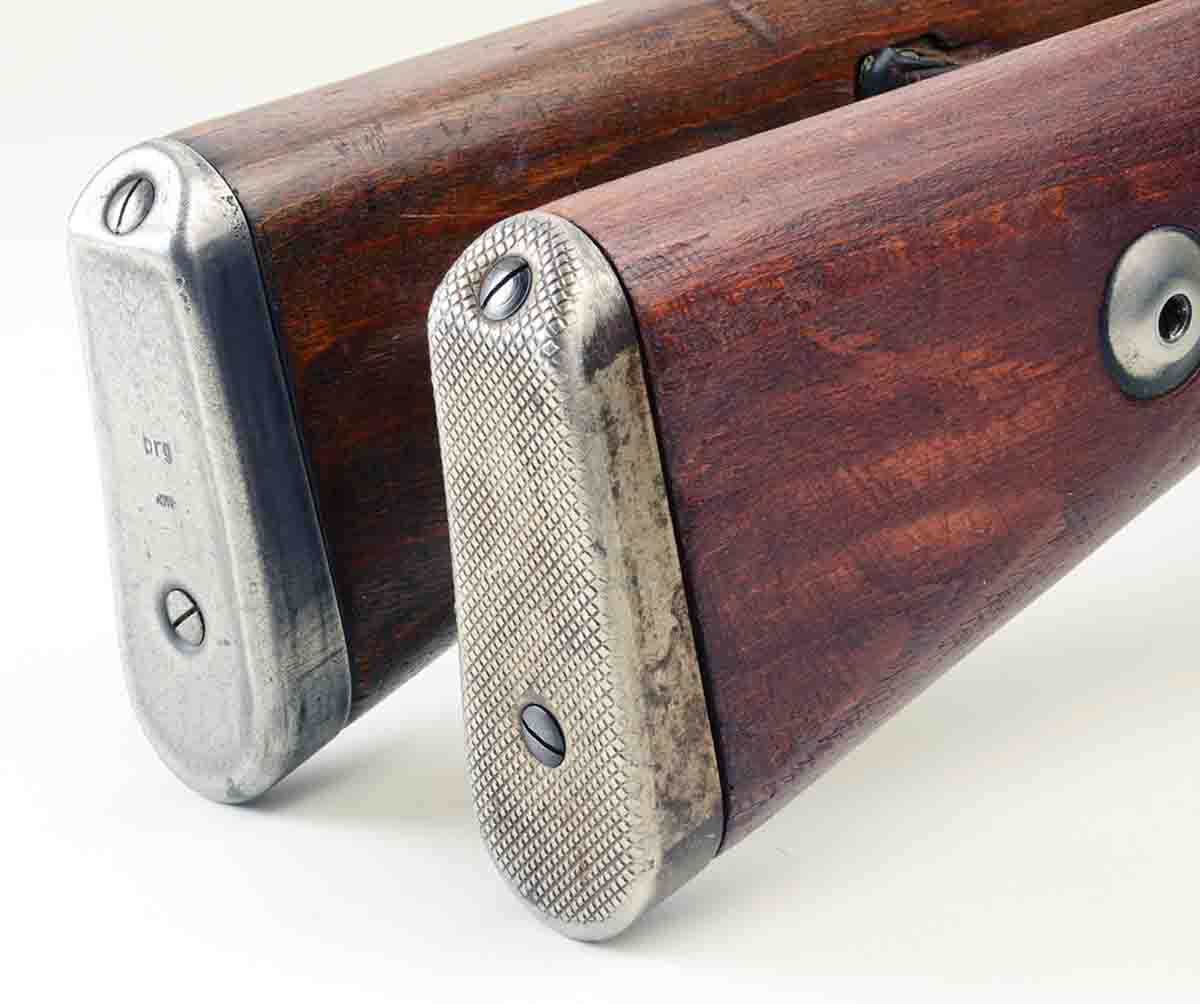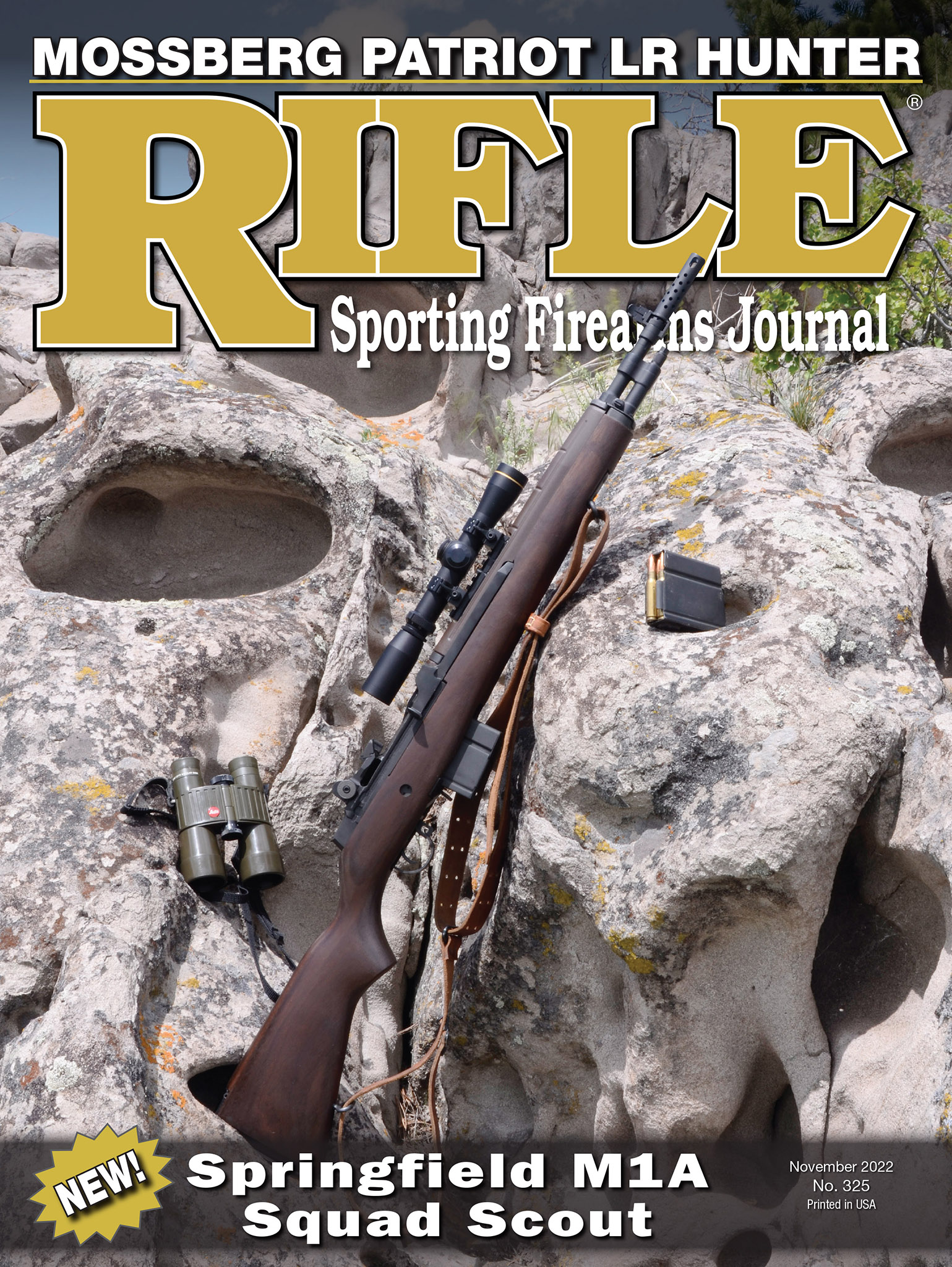Down Range
Buttplates
column By: Mike Venturino | October, 22

Mostly, I’m speaking about steel or hard rubber-types as worn on military rifles or vintage sporting rifles and/or replicas of the latter. Some have been very practical, some not so practical, and a few must have been devised by sadists. Most old rifle buttplates are worth a few bucks to perhaps $100 or so, for those fitting a collectible vintage rifle. However, one rifle in my possession has a buttplate worth about $1,000. More on that later.

Military rifles have traditionally been given tough steel buttplates because they could possibly be used as ancillary weapons in close-in fighting. I cannot speak about the buttplates of the various marks of M16s, but by the best of my knowledge through the M14, American military rifles had steel buttplates, albeit a few from the nineteenth-century were made from brass. Another fact about most military rifle buttplates is their width. Again, up to the M16’s 5.56mm, its cartridges delivered noticeable recoil. Wide buttplates disperse recoil. Here are the buttplate widths at their tops on four Springfield Armory infantry rifles residing in my racks: Model 1873 “trapdoor” .45-70 – 1.59 inches, Model 1896 Krag .30-40 – 1.78 inches, Model 1903 .30-06 – also 1.78 inches and 1943 vintage M1 Garand .30-06 – 1.80 inches.
Dispersing recoil is a matter that some sadistic Remington engineer ignored back in the 1860s during the design of the Model No. 1 Sporting Rifle (aka rolling block.) Those steel buttplates are plain awful. Neither do they have a flat spot anywhere: curved both vertically and across their width which is only 1.37 inches. That might work with some pee-wee cartridges, but the No. 1s I have owned have been chambered for .44-77 and .50-70. That Remington buttplate just plain hurts when the ammunition is a full case of black powder and 400- to 450-grain bullets.

One feature Winchester incorporated in its Models 1873 and 1876 was a compartment in buttplates for storage of jointed cleaning rods. That was dropped in further models but the U.S Army started doing the same with its Model 1873 “trapdoor” Springfield carbines soon after the Little Big Horn debacle, where cavalry troopers had trouble with stuck cartridge cases. Having no cleaning rods with which to punch them out, troopers had to resort to their Colt .45 revolvers. My Springfield Models 1896 Krag rifle and carbine have that compartment, as do Model 1903s and M1 Garands and M14s. I’ve heard stories of vintage papers and money being found in those hidey-holes. (Upon opening the buttplate compartment in my German K43 semiauto, a spare firing pin fell out.)
Those who are addicted to BPCR Silhouette competition understand that we are shooting in a recoil-rich game. Firing from sitting or prone for three-quarters of a 40- or 60-shot match with a .40- or .45-caliber rifle using bullets from 400 to 580 grains leaves an unpadded shoulder bruised and sore. That’s even with wide shotgun-type buttplates. I don’t know of anyone who doesn’t pad up.
Now back to my most valuable buttplate. A few years back at a rare visit to a pawn shop, I spotted a Mauser K98k behind the counter. Its stock had been butchered a bit. I asked the counter guy what he had there and he said, “It’s what’s left of a German sniper rifle.” What I saw and he did not know was that it was a K98k with a code of BCD4. That meant it was one of the few K98ks built from the ground up to be a sniper rifle. As such, it had the extra wide left receiver side rail, plus it was the only K98k factory equipped with a checkered buttplate. After bringing it home, I was perusing the internet and happened to see that a buttplate identical to the one on my new rifle had sold for $900+ on eBay. I had that rifle’s stock restored and it still sits in my gun vault.
Many of today’s shooters purchasing replicas of nineteenth-century rifles like the looks of their curved steel buttplates. A fellow contacted me saying he had found a Sharps replica chambered for the huge .45-110 cartridge. He said, “Should I buy it.” I asked about its buttplate. “Curved steel,” he said. To which I replied, “No matter what I say, you will probably buy that rifle and then you will regret doing so.” So he bought it and later admitted regretting it because its recoil was so brutal.


